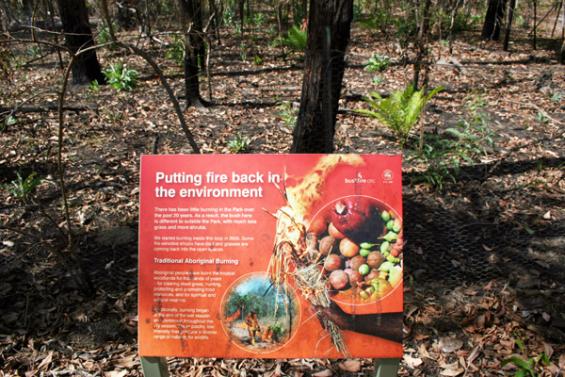Andrew Edwards of Charles Darwin University is conducting Bushfire CRC research into fire severity in the tropical savanna woodlands of northern Australia.
Northern fire mapping

This project successfully developed fire severity mapping to use in fire management in the tropical savannas and rangelands of northern Australia. It also applied the data to ecological-risk assessments, including greenhouse gas emissions, tree carbon sequestration, biodiversity and erosion.
Before this work, there were no maps illustrating and describing the effect of fire on tropical savanna vegetation. By the end of the project, fire severity mapping was available on the North Australia Fire Information website.
This project, led by Dr Jeremy Russell-Smith at Charles Darwin University and Dr Mick Meyer at CSIRO, developed a method to accurately measure and map the effect of fire across the whole 1.9 million square kilometres of remote and sparsely inhabited tropical savanna vegetation. It operationalised previous Bushfire CRC PhD research, undertaken by key researcher Dr Andrew Edwards, also from Charles Darwin University.
Large fires regularly sweep across vast tracts of northern Australia. The researchers' assessments determined that between 2008-2012, in the high rainfall savanna woodland of the far north, 450,000 square kilometers burned annually. That constitutes 58% of the total area, hence, on average, the region experiences a fire every second year. The majority of these fires occurred in the late dry season and were of high severity.
Most interestingly, the project found that there is an enormous financial incentive for improved fire management through the payment for ecosystem services. The reduction in greenhouse gas emissions from savanna burning, and carbon sequestration of tree biomass, has the potential to generate substantial revenue for land managers that could cover employment and other management costs. There are also benefits to indigenous traditional owners who can earn incomes by managing their own land. This gives them greater choice to determine their own futures and live and work on country, which has been clearly demonstrated to improve both their physical and mental health.
The co-benefits of these improved fire regimes to biodiversity have been calculated through statistical models derived from extensive empirical datasets, and simple robust methodologies have been developed and published. Interestingly, with improved fire management, researchers found a 142% increase in adult recruitment of the long-lived obligate seeder Cypress pine, Callitris intratropica, which indicates positive recruitment of many other rare and threatened species. These simple but robust models provide measures of the potential to improve the environment through fire management.
The demand for useful fire-related mapping products meant this project generated significant interest, which enabled the small project team to draw on knowledge and expertise from across the whole tropical savanna region.
New tool makes carbon credit calculations easier
In a related project, Bushfire CRC researchers at Charles Darwin University were profiled on ABC TV on their Savanna Burning Abatement Tool.
http://www.abc.net.au/news/2013-06-19/-savbat-launch/4765344












